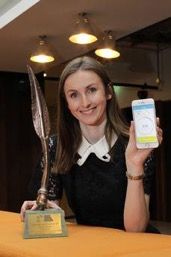Leadership and Innovation
We are living in the fourth industrial revolution. Technology is evolving and fusing, to include physical, digital and biological elements. Even experts in the field wait with baited breath, to observe the impact the fourth industrial revolution will have, on all aspects of human life.
Living in this (insert your choice of adjective: exciting, scary, overwhelming, inspiring) age we are all surrounded by innovations in our everyday life. Innovations are, simply put, a new idea, device or method. I’m sure none of you will have too much trouble naming a few famous innovators, those creative thinkers whose ideas form the basis of new innovations. My personal favourites are Joseph Fry (inventor of the chocolate bar) and Caresse Crosby (inventor of the modern day bra). However, for creative ideas (such as chocolate bars and bras) to become a part of our everyday lives, a different definition of innovation is required: the implementation of a new idea, device or method to bring about change. So, whilst those famous innovators easily spring to mind, the reality is they won’t ever be working alone. True innovation requires a collaborative teamwork approach.
Physiotherapists are fantastic innovators, our physiotherapy education has taught us to problem solve and use the resources available to us. I can name dozens of fantastic examples; from patient consultation via videoconferencing, to app developments, 3D printing to SNOMED CT sets and beyond.
http://www.walesonline.co.uk/news/health/how-innovative-3d-printing-technology-11135610
However, I know there are even more fantastic, creative ideas being generated by physiotherapists every day, which don’t come to fruition, or aren’t implemented on a large scale. Whilst the rest of society is in the throes of the fourth industrial revolution, the NHS and healthcare lag behind. So how can we harness the power of the technology around us? How can we maximise new developments to be more efficient with our dwindling resources? How can we embrace new tools to deliver high quality, high value care for our patients? It’s easy to tread water, relying on our comfortable, established methods and treatment techniques. What healthcare, and our patients, really need is for us to become innovation leaders.
Innovation leaders are not necessarily creative thinkers with the big ideas. What is more vital is identifying great ideas, that can make a big difference, and implementing them to become a reality: that’s truly innovation. Sometimes, in the bureaucratic world of healthcare, it can seem insurmountable to be innovative. So how do we overcome those barriers?
- Have a clear vison
To succeed in implementing a new idea, device or method you need to be able to see how your service will be different (hopefully better!) because of it.
- Communicate your vison
Some innovations will require you to convince a range of stakeholders, within and beyond your immediate team. Be able to concisely and passionately describe your vison, make people feel enthusiastic about your idea. Have confidence in the power of your conviction.
-
Identify your stakeholders
Be prepared to spend time identifying the key stakeholders you’ll need on board to implement your project. Use your connections and contacts to establish who will be easy to convince, and who will need your powers of persuasion.
- Harness your experience
You are an expert in your field, and will comprehend what new technologies will work for your service and your patients. Use your knowledge and experience to be an innovation leader.
- Persevere
Don’t give up! Focus on your vison, stay enthusiastic and passionate. Barriers can always be overcome. To quote the bear hunt: “We can’t go over it, can’t go under it, we can’t go around it, we’ll have to go through it”.
- Take advantage of funding opportunities
Organisations, such as the Health Foundation, the Nuffield Trust and the Kings Fund, regularly have calls for funding opportunities to pilot or implement innovative ideas. These sources of cash can help you overcome the funding barrier, as well as giving you an opportunity to pilot your ideas. Pilot data is powerful, and can help you implement your innovations long term at the end of the project.
- Use other people with experience to help you
If you have an idea you need help implementing, don’t be afraid to ask for help. That might include colleagues, the CSP, the ACPRC or other healthcare professionals who’ve had success with similar projects. Use social media to help you make contacts with those outside of your day-to-day networks. There is a Facebook group for AHPs interested in Digital technologies
https://www.facebook.com/groups/digitalAHPs/?fref=ts
And some useful Twitter handles include: @DHealthLDN @hharniess @DigiLeaders @NHSDigital @OrchaUK
Finally, when you’ve become an innovation leader, and effectively implemented the idea, device or method, share your success! Don’t be shy, or embarrassed, about applying for awards. They are a great way of showcasing innovation, within and beyond, the physiotherapy profession. Showcasing your innovation will inspire others, and help healthcare catch up with the implementation of technology. I’m proud to have recently received the award for Sustainability through Digital from digitalhealth.london. My biggest hope is that my award will help other services apply the technology, for patients beyond my service to benefit. If I can do it, so can you!







